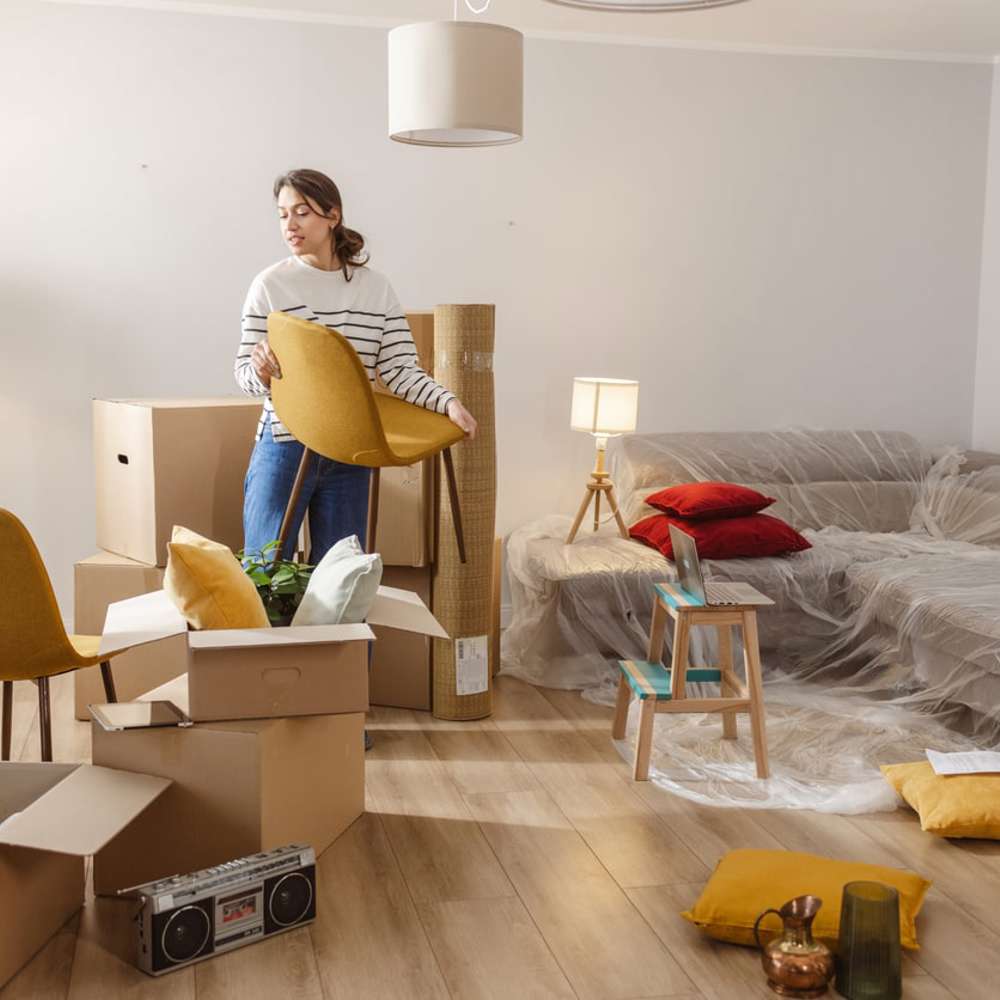Whether you live in an apartment or a small home, a balcony garden is a perfect way to transform your outdoor space into a lush, green nook. However, unlike a private backyard or even a patio, you’ll need to factor in the size constraints and light conditions of your balcony to properly prep the space for your plants, furniture and decor of choice. In this article, we’ll walk you through the steps of creating your very own balcony oasis, including how to design the perfect layout and choose the right plants.
1. Getting Started With Your Balcony Garden
Already have a specific vision for your dream balcony garden? Before you buy anything, don’t forget to (1) assess your space and (2) clear out any clutter that may be on your balcony.
Assess Your Space
What you include in your balcony garden ultimately depends on the constraints of your space. Unlike a backyard or front yard garden, you’ll need to ask yourself questions such as:
- What items do I plan on keeping on my balcony (i.e., table and chairs, grill, etc.)? A balcony garden can consist solely of herbs, flowers and other plants, but you may want to add a table and chairs, a grill, a bar cart and other furniture or outdoor kitchen appliances.
- How big is my balcony? Depending on your balcony’s size and shape, you may need to consider making use of vertical space (like the walls or ceiling) or investing in space-saving furniture to prevent your balcony from feeling cluttered.
- Is my balcony exposed to full sun or partial shade (or is it mostly shaded)? The amount of sunlight your balcony receives daily will pretty much determine the types of plants that will thrive in your garden. Also, consider the direction your balcony faces. South-facing balconies typically enjoy more sun, whereas north-facing ones might be cooler and shadier.
- What’s the weight limit of my balcony? You’ll also need to consider weight. Balconies have weight limits, and it’s key to know what yours is before you start adding heavy containers/planters, soil, plants and furniture to your space. Ask your building manager, landlord or HOA if you’re not sure what this limit is.
- Are there limitations on what I can put on my balcony? Some apartment buildings may have rules about what you can or can’t put on your balcony as well, whether for weight or safety reasons. If you live in a windy climate, you may want to avoid hanging plants or objects to prevent them from flying off and damaging a neighbor’s property or passersby.
| Tip: While it may seem like common sense, your garden setup should under no circumstances obstruct pathways, railings, fire escapes or other building fixtures designed for emergencies and overall safety. |
Clear the Clutter
It’s easy for balconies to become storage areas for all the things that don’t have a specific place in your home. To create a blank canvas for your garden, you’ll need to declutter and clean your balcony first. As always, we recommend using the three-pile method or another decluttering system to get rid of items you don’t need.
Consider placing any items you still use (but not on an everyday basis) in a self-storage facility to create space for your garden. These items include holiday decorations, sports gear, beach chairs or other seasonal belongings.
2. Designing Your Balcony Garden
Since every item you place in your balcony garden counts, take some time to craft a detailed layout, measure your space carefully and plan out any items you may want to buy. Here are some guidelines to help you create a space that’s both beautiful and functional.
Maximize Vertical Space
Balconies often have limited floor space, so making use of vertical space is key. Get creative with the walls, railings and even the ceiling to hang planters or install shelves. This not only gives you more room to grow plants but also adds an interesting visual element to your garden. Trellises can support climbing plants like ivy or small vegetables for a living wall. Ceiling hooks are great for hanging pots, adding different levels to your garden and drawing the eye upward.
Create a Cohesive Look
Consider your balcony an extension of your indoor living space. This means choosing planters and plants that match your home’s interior style. Whether you prefer a modern, minimalist look with sleek containers and simple furniture or a cozy, rustic vibe with wooden boxes and pallet furniture, consistency is the name of the game — just make sure everything you put on your balcony is weatherproof.
3. What to Grow in Your Balcony Garden
Your balcony may be windy, shady or hot, and it’s important to choose plants that will thrive in your balcony’s unique conditions. In general, perennials are always a great choice for balconies. Herbs like basil, mint and thyme are great for sunny spots, while ferns and peace lilies prefer shade. If you have enough light, consider small vegetables like cherry tomatoes or peppers. Flowers can add color and fragrance — petunias, marigolds and geraniums are all easy to care for. The balcony is also a great spot for hydroponic options if you’re interested in growing your own food.
Sustainable Gardening Practices
Use organic soil and consider making your own compost to nourish your plants sustainably. When it comes to pest control, opt for natural remedies (many plants, like basil, citronella, garlic, rosemary and others, are actually naturally pest-repellent). Also, to save water, try watering your plants with rainwater you collect or reuse household water (like the water you boil your eggs in).
Adjust According to Environmental Factors
While balconies tend to be more shielded from the elements than backyards, they can still be exposed to harsh weather conditions. Depending on how windy your balcony gets, you may want to consider heavier planters made from materials like terracotta that can withstand any stray gusts. You can also install windbreaks like bamboo screens or tall plants that can shield against strong breezes without blocking natural light.
If you live in a rainy climate, make sure your pots and planters have good drainage to prevent waterlogging, which can damage roots and lead to root rot. In sunny areas, some plants may need shade during the hottest part of the day, so consider retractable shades or umbrellas.
Maintenance and Care
Watering frequency varies based on your plants and climate, but a general rule is to water deeply (i.e., ensure all the soil gets wet) and consistently, waiting until the soil completely dries out in between watering sessions. In the spring, give your plants fertilizer and help them grow.
You may need to adjust your plant care routine with the seasons, such as protecting your plants from frost in the winter, pruning dead or overgrown branches in the spring, and preparing them for heat in the summer. Regularly checking on your plants’ health will help you catch any issues early, like pests and diseases.
4. Enhancing Your Balcony Garden Experience
Your balcony garden is about more than just growing plants — it’s about creating a space that you enjoy spending time in. Here are some tips on how to create the perfect space:
- Furniture and Decor: Add comfortable seating like a small bench or a couple of chairs and a table. Choose compact and foldable furniture to save space, and consider matching or complementing the style of your indoor space. You can make the area cozy with outdoor rugs, throw pillows and decorative items made with weather-resistant materials. We recommend popping into your storage unit or any other storage areas you may have first to see if you can repurpose any items before buying them new.
- Lighting and Sound: String lights or solar-powered lamps can create a warm ambiance in the evenings. If privacy or noise is a concern, consider a small fountain or wind chimes to add soothing background sounds and mask city noises.
If you’re ready to create a balcony garden and want more tips on household storage and organization, space-saving hacks and other tips, visit the SmartStop blog.








